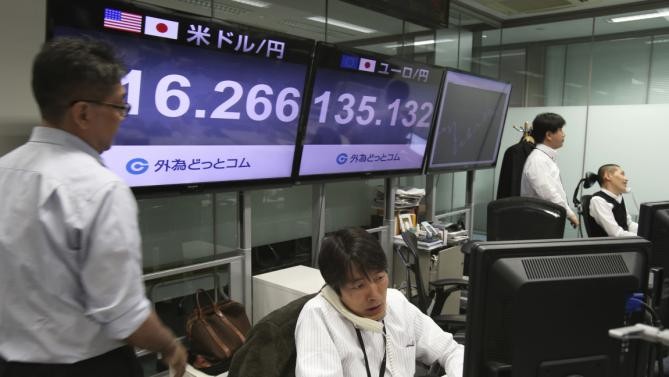Find Equity Opportunities With Currency Moves Yahoo Singapore Finance
Post on: 13 Май, 2015 No Comment

With everyone trained to look at the same sales figures and gross domestic product (GDP) numbers, it is always useful to find new ways to project a company’s earnings or a country’s growth rates. For equity investors, foreign exchange fluctuations can mean the difference between a profitable quarter and an unprofitable one, while for currency traders, equity movements can help to determine whether the overall market is seeking risk or avoiding it. With this information, traders and investors can get a better understanding of the close relationship between these two markets and also gain an added advantage in forecasting market direction.
International Exposure
For multinational corporations, doing business internationally can be a good or bad thing. If your local currency is weakening, foreign exchange fluctuations will boost foreign earnings; if your local currency is strengthening, currency fluctuations could reduce earnings. The period between 2002 and 2007 was one of U.S. dollar weakness. Take McDonald’s for example; the advantage that the company’s quarterly earnings received from the foreign exchange conversion given their international exposure cannot be dismissed.
In 2007, Aegis PLC, the British buyer of advertising space, reported an 18% drop in the first-half profits because of negative currency movements. The U.S. dollar fell 10% against the British pound in the first six months of the year, while the euro fell 1.8%. This adversely affected profits from U.S. and European sales. Companies based in Europe, the United Kingdom and even Canada were feeling the pinch of a lower U.S. dollar as the value of larger contracts with producers suffer when profits are converted back.
Merger and Acquisition Targets

Sharp currency fluctuations can also lead to an increase in cross-border mergers and acquisitions (M&A). When the Canadian dollar hit a 31-year high in 2007, Canadian companies went on a buying spree. It was not hard to understand why, given that the currency increased 62% between 2002 and 2007. This increase raised the market share of Toronto-Dominion Bank, Canada’s third largest bank (as of October 2007) to more than $52 billion, allowing it to announce plans to buy U.S.-based Commerce Bancorp for $8.5 billion. The deal was structured as 75% stock and 25% cash. If TD had engaged in the transaction six months prior to the announcement, when the USD/CAD was trading at 1.16, the deal would have cost $1.3 billion more Canadian dollars, or a premium of 14%.
Canadian banks have announced or completed billions of dollars’ worth of cross-border acquisitions in 2007. Currency fluctuations clearly impacted cross-border M&A and it is not uncommon to often see this trend when companies, in countries with currencies that have increased significantly in value, spend their newfound wealth.
Figure 2 illustrates the close relationship between the Dow (candles) and carry trades (black line) between 2002 and 2007. In this example, the carry trade index is tabulated as a basket composed of the three highest yielding currencies against the bottom three low yielding currencies that are updated daily over 17 years using three-month LIBOR rates for each country. For our universe of currencies, we used the majors (EUR/USD, USD/JPY, GBP/USD, USDC/HF) as well as the commodity dollars (USD/CAD, AUD/USD, NZD/USD).














